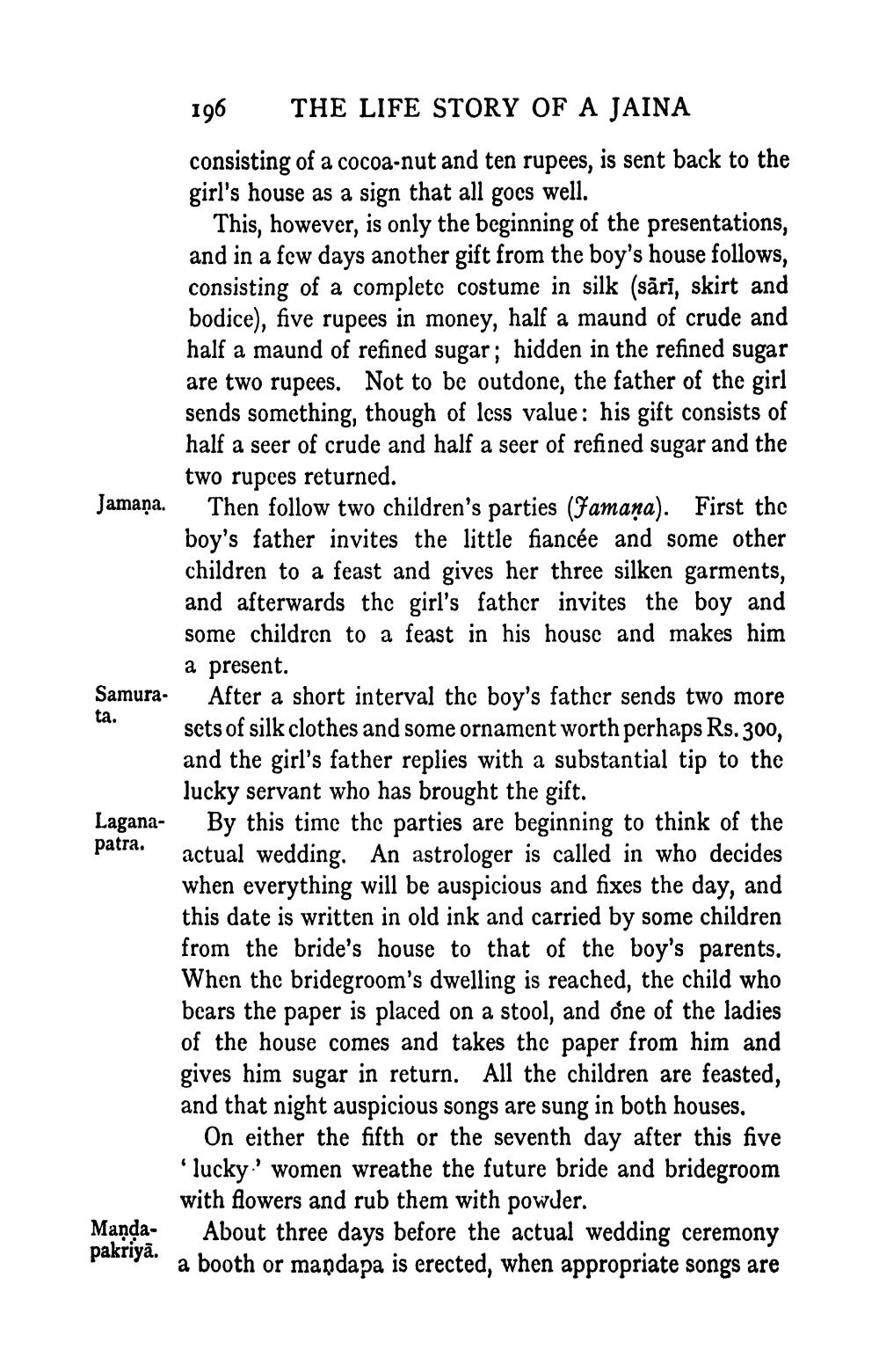________________
196 THE LIFE STORY OF A JAINA consisting of a cocoa-nut and ten rupees, is sent back to the girl's house as a sign that all goes well.
This, however, is only the beginning of the presentations, and in a few days another gift from the boy's house follows, consisting of a complete costume in silk (sāri, skirt and bodice), five rupees in money, half a maund of crude and half a maund of refined sugar; hidden in the refined sugar are two rupees. Not to be outdone, the father of the girl sends something, though of less value: his gift consists of half a seer of crude and half a seer of refined sugar and the
two rupees returned. Jamaņa. Then follow two children's parties (Jamana). First the
boy's father invites the little fiancée and some other children to a feast and gives her three silken garments, and afterwards the girl's father invites the boy and some children to a feast in his house and makes him
a present. Samura. After a short interval the boy's father sends two more
sets of silk clothes and some ornament worth perhaps Rs. 300, and the girl's father replies with a substantial tip to the
lucky servant who has brought the gift. Lagana- By this time the parties are beginning to think of the patra.
actual wedding. An astrologer is called in who decides when everything will be auspicious and fixes the day, and this date is written in old ink and carried by some children from the bride's house to that of the boy's parents. When the bridegroom's dwelling is reached, the child who bears the paper is placed on a stool, and one of the ladies of the house comes and takes the paper from him and gives him sugar in return. All the children are feasted, and that night auspicious songs are sung in both houses.
On either the fifth or the seventh day after this five lucky.' women wreathe the future bride and bridegroom
with flowers and rub them with powder. Manda- About three days before the actual wedding ceremony pakriya. a booth or mandapa is erected, when appropriate songs are
ta.




